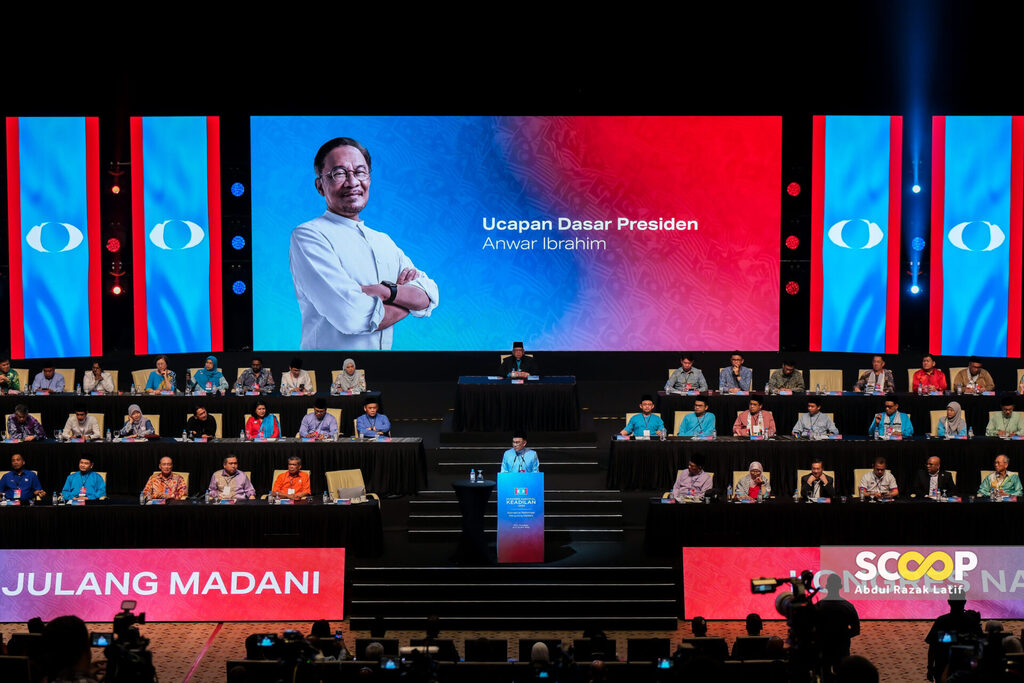PRESIDENT Franklin Delano Roosevelt dominated US politics from the early 1930s until his demise shortly before the end of World War II in 1945. Indeed, his socio-economic and foreign policy agenda has arguably influenced not only America’s but even the global trajectory up to today.
Roosevelt won a record of four consecutive presidential elections by building a coalition of diverse groups that eventually became known as the “New Deal Coalition”: minorities (including African Americans), trade unions, small third parties, intellectuals, and white Southerners. Many of these groups had even previously been opposed to each other and even his party: for instance, there was a time when black and labour voters were hostile to the Democrats.
In Malaysia, KEADILAN has long been known for successfully building coalitions with other parties since its inception. These include the Barisan Alternatif, Pakatan Rakyat, and Pakatan Harapan, to the current Madani Government formed after the 2022 General Election.
KEADILAN itself was originally born from a coalition of civil society groups and political parties arose and came together during the Reformasi movement. This group eventually transformed into ADIL, an NGO, before becoming a full-fledged political party, the Parti Keadilan Nasional, in 1999.
We have always sought to be a party for all Malaysians. This is still a goal worth fighting for even though the country and its political scenario have changed inexorably since the Reformasi movement.
The question before us in 2025—just under three years in federal power and with another party election dawning—is thus: how can KEADILAN build and reinvigorate our multiracial and national coalition to remain relevant to the post-Reformasi generation of Malaysians as it strives to win future elections?
I would argue that, while we should keep our eyes always on the future, it would also not be inappropriate to remember the long, often bittersweet history of our party to provide us with guidance for the road ahead.
KEADILAN always a big tent
As someone who basically grew up with KEADILAN, it strikes me how truly a “big tent” we were—and still are. As a fledging party, we brought together human rights activists, trade unionists, and ordinary Malaysians, along with Anwar Ibrahim’s supporters from within UMNO, as well as Islamic NGOs such as ABIM and JIM.
Uniquely multiracial, KEADILAN initially garnered support primarily from urban areas. However, in our very first General Election debut, the party rode the wave of Malay discontent, securing seats in traditional PAS strongholds in Kelantan and Terengganu, in addition to Permatang Pauh.
In 2003, we merged with the small progressive nationalist party, the Parti Rakyat Malaysia, bringing in veterans and young idealists from the left, led by Dr. Syed Husin Ali. While KEADILAN secured only a single seat in the 2004 General Election, we bounced back two years later when Dominique Ng, became our first successful non-Malay candidate in Padungan during the Sarawak State Election.
Truly a multiracial, national party
Our critique of the abuse of the NEP, coupled with Anwar’s aggressive and extensive campaigning (he was released after the 2004 General Election), and the then-Opposition’s informal coordination ensured that by 2008, Barisan Nasional lost its usual two-thirds majority in Parliament, along with four other state governments, while PAS retained control of Kelantan.
This was driven by significant non-Malay support, especially from the Indian community, as well as growing backing from urban Malays. By this point, KEADILAN’s status as a truly multiracial party had been firmly established.
In the 2011 Sarawak state election, KEADILAN won three seats, including two indigenous seats for the first time. This success was driven by rising pro-Opposition sentiment among the indigenous community and supported by the party’s ability to recruit professionals like lawyers from the state.
Two years later, in the 2013 General Elections, Pakatan Rakyat garnered over 50 percent of the popular vote, compared to 47 percent for Barisan Nasional. That was also the year KEADILAN achieved the milestone of having elected representatives in every state of the Federation. In Sabah, KEADILAN won the Kadazan seat of Penampang with one of its biggest majorities, while at the state level, it won seven seats.

However, the party’s belief in coalition politics was tested in February 2015, when Anwar was imprisoned again on the 10th. PAS, which had been KEADILAN’s long-standing partner, adopted a more hardline stance after the passing of its spiritual leader, Nik Aziz Nik Mat, two days later. While many pundits believed KEADILAN would not survive without PAS, our then-president, Dr. Wan Azizah Wan Ismail, held firm. Despite Pakatan Rakyat collapsing in June, KEADILAN, DAP, and PAS splinter party AMANAH formed Pakatan Harapan later that year, which was joined by Dr. Mahathir Mohamad’s PPBM in 2016.
Instead of leading to KEADILAN’s demise, the three-cornered strategy against BN and PAS in 2018 resulted in the party’s highest-ever haul of parliamentary seats: 47. Our base grew from urban, mixed seats in the Klang Valley to semi urban Malay constituencies on the West Coast of the Peninsula. In Sarawak, the party won three indigenous seats while retaining the Chinese-majority seat of Miri.
However, without PAS, KEADILAN lost its representation in Kelantan and Terengganu.
The Pakatan Harapan 1.0 government collapsed after less than two years in power, following PPBM’s departure and 11 KEADILAN MPs joining them. In addition to several Malay MPs from the Peninsula, this included MPs from the indigenous communities in Sabah and Sarawak. KEADILAN was left with just one MP each from Sabah and Sarawak. Later that year, during the Sabah state election, KEADILAN maintained its two state seats.
In 2021, two states went to the polls: Sarawak and Melaka. Unfortunately, KEADILAN was wiped out in both elections, losing all previously won seats. Pakatan Harapan had made major inroads in Johor in 2018 but was nearly obliterated in that state’s elections in early 2022, with KEADILAN holding onto just the single seat of Bukit Batu.
A resilience of its own
As the 16th General Election approached, there were genuine fears that KEADILAN would face a major setback. However, the party’s internal election was held before the national polls, resulting in an infusion of young and multiracial talent at the top following the 2020 split.
This strengthened the party’s presence on the central to southern West Coast.
In the 2022 General Elections, KEADILAN made a strong comeback in Johor, winning 7 Parliamentary seats. Along with Selangor, this was one of the party’s best performances. The party maintained its presence in Sabah and Sarawak but failed to make gains in Kelantan and Terengganu, and lost ground in Kedah and Pahang due to the Perikatan Nasional wave.
In total, KEADILAN won 30 seats, roughly equivalent to its performance in the 2008 and 2013 elections. Pakatan Harapan gained 82 seats, making it the largest coalition in Parliament, though it fell short of an outright majority. A post-election Unity Government was formed to restore stability, enabling Anwar Ibrahim to finally become Prime Minister.
The point of all this is that KEADILAN, despite being repeatedly written off by critics, has a resilience that is arguably based on its multiracial approach and appeal. In the next part of this essay, I hope to tackle how this can be maintained and made relevant to Malaysia’s current political trajectory. – April 9, 2025
***Nik Nazmi Nik Ahmad is the Natural Resources and Environmental Sustainability Minister and KEADILAN Vice President. He is the author of Malaysian Son and Saving the Planet.

